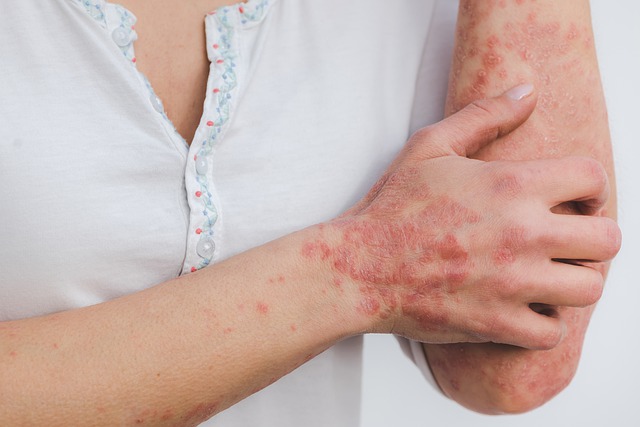Skin disorders are common and affect people from all walks of life. Ranging from acne breakouts, blisters, and hives to scaly rashes due to eczema, there are numerous skin diseases that affect all ages, races, and genders. Symptoms of skin diseases vary tremendously. Some may be painful; some may be painless. Some are environmental and others may be genetic. Ultimately, most skin disorders arise from a combination of different factors.
A number of skin conditions have been “unmasked” during COVID-19, which affects different people in different ways. Most infected people will develop mild to moderate illness and recover without hospitalization. However, a significant number of individuals suffer major respiratory complications and die. However, our desire to prevent getting COVID-19 has also resulted in unexpected skin complications.
In the beginning of the COVID‐19 outbreak, skin manifestations, if present, were not well attended to. Considering the severity of the plague, it was understandable that the primary concern was how to prevent respiratory failure and death. However, as the occurrences of skin complications arose, dermatologists and other skin specialists had to come up with solutions and give out medical assistance to those in need. Numerous studies are investigating the symptoms of coronavirus appearing on the skin in different forms like rashes, blisters, irritation, dermatitis, etc.
“Our findings reveal a previously unreported subset of patients with long-standing skin symptoms from COVID-19, in particular those with COVID toes. These data adds to our knowledge about the long-term effects of COVID-19 in different organ systems. The skin is potentially a visible window into inflammation that could be going on in the body,” said study author Esther E. Freeman, MD, PhD, director of Global Health Dermatology at Massachusetts General Hospital.
Furthermore, the prolonged use of personal protective measures in both healthcare workers and patients also contributed to the rise in skin-related issues. The perpetual use of surgical and N95 masks by individuals resulted in reactions on the skin causing various pimples and other irritating rashes.
Moreover, the excessive use of sanitizers and soaps can also cause skin problems such as hand dermatitis. Personal protective equipment can also provoke irritation to the skin and mucous membrane. This has been exacerbated by low quality manufacturers producing substandard and, at times, harmful sanitizers, gels and soaps which further irritate the skin.
Physician-scientist, neuroimmunologist, inventor and entrepreneur Brian S. Kim is an active dermatologist who treats skin diseases and maladies. “Many of the masks that people — and myself — have at home are these fairly hard cone masks that can be very irritating from the pressure. Usually, these masks are used very transiently while people are doing housework that creates dust,” says Dr. Kim. He is the co-director of Center for the Study of Itch and Sensory Disorders at Washington University School of Medicine.
He further enlightens us that there are numerous treatments for different kind of itches. Moisturizers are well suited for dry skin individuals. Patients suffering from eczema should opt for anti-inflammatory drugs as they have better anti-itch properties. Kim further elaborates that, “My face had long pressure lines, with redness, soreness, and my face was also very flushed underneath. I also have some mild rosacea, which was getting exacerbated by the heat and humidity and causing my face to get unusually red.” Since he himself was exposed to skin problems, he has both personal experience and advice for skin ailment sufferers.
Notwithstanding the challenges, it is of paramount importance to note that wearing face masks and protective measures remains critically important from a public health standpoint. Masks should fit comfortably, be changed and/or washed regularly. Sanitizers and soaps should be of high quality and gentle in nature Meticulous but gentle skincare routine should be observed and vigilant supervision of changing skin conditions should be noted.


